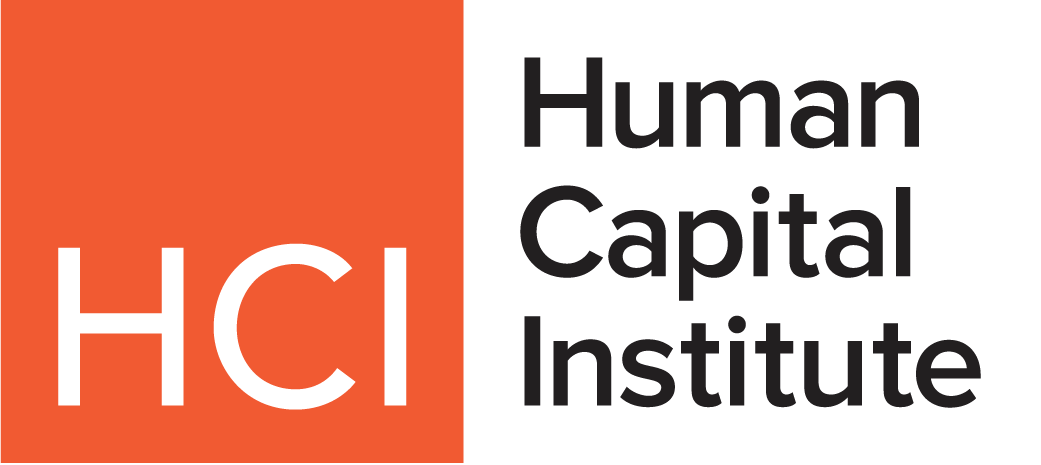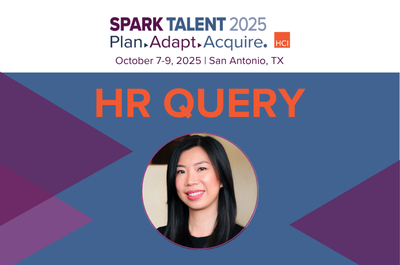How can you do it all at once? It’s a question that rings in the mind of many HR professionals, saddled with goal after goal, and for good reason. The workload of HR professionals is mighty, and the deliverables are grand. Upholding a business model, supporting your people strategy, keeping up with everchanging legal issues, all while attempting to plan for the future of work—it feels like carrying an entire tray of freshly shaken bottles of Coca-Cola, waiting to explode.
But what if you could work towards these goals all at once, one sip at a time?
Sue Lam, VP of People Insights, Strategy, and Culture at The Coca-Cola Company and HCI Advisory Board Member, suggests to the HR world that a proper people strategy can work to help every part of the business, not just the people.
Lam is set to speak at the SPARK Talent 2025 conference in San Antonio, Texas in October, where she’ll discuss how to not only align but embed your people strategy into your business strategy, and the tips and tricks on how to get there.
HR Daily Advisor got to sit down with Lam to get an early look at her insights, and how she’s innovating just what HR can do. Here are the 4 biggest takeaways from our discussion.
Model the Change You Want
In a space in flux as often as HR, Lam keeps herself motivated with the words and content of other professionals, whether it be podcasts, books, or speeches. An industry expert herself, she still looks outward for inspiration and guidance, and models that behavior for her team.
“The biggest way that I can do that is actually role playing the active learning that I’m doing,” Lam says. “I’m pretty open with my team around what things I’m reading and seeing and hearing and also sharing the podcasts and books and articles that I’m actually reading. I try to role model the behaviors that I’m hoping to see in my team.”
But a good strategy doesn’t come from just one source. When trying to make a people strategy that works for everyone, you need to actually know who you’re strategizing for.
“In terms of my team’s development, I really do try to understand them better as an individual and what their career paths are. And then I help them to develop the skills and capabilities that they’re going to need for their next role, so I have a pretty big focus on development.”
Pilot, But Properly Implement
Piloting programs is a favorite pass time for HR professionals, trying to make sure each program finds its success before cementing into the rules. But Lam points out that a program constantly in pilot, isn’t really a program.
“What I find is we don’t spend a lot of time taking a look at or piloting different HR projects and measuring the effectiveness of those projects before we create a full-blown project, and then what you find is some feedback or things that don’t work that then need to be addressed.”
Things can easily stall out when you’re not tracking the pilot or get caught up in making something finished before properly testing it. Lam reminds HR professionals that thoroughness, and clear goals, help orient you.
“What I think would actually be really helpful for HR and other parts of the business as well, is to take some great initial ideas, pull together a wireframe and pilot that with a small part of the business. And then measure. … And then if the pilot was indeed successful based on the data that you collected, then move on to a larger scale.”
Behaviors Are Data Too
When given the chance to talk to someone as proficient as Lam, who works with a company as large as Coca-Cola, you feel the need to ask, “what’s their secret?” Handling shifts in company culture, especially one as tenured as The Coca-Cola Company, can seem like an impossible task. So, when redefining her company’s people strategy, we asked what Lam’s “secret ingredient” was.
“Secret ingredient? I mean, it’s not so secret, but I would say one that’s missing a lot when we’re talking about people strategy is data or metrics.” Lam explains.
“I’m a data person, so I am always like, show me the data to support what you’re thinking. How’s HR and the business going to know that it’s successful in delivering its strategy if we don’t have data? I see a lot of HR colleagues saying they need data for various initiatives that they have, but they could also benefit from thinking about what’s actually the problem to solve before identifying metrics.”
Not only should you be looking at the data but ensuring that you’ve analyzed the problems in front of you and understand what data you need to solve it. And that data isn’t always numbers on a chart. If you want metrics for a people strategy, Lam recommends going to the people.
“Are you looking just more informally at how do you get work done, how do you make decisions? How do you collaborate with other teams? Is your organization very hierarchical and command and control?” Lam says. “It’s thinking about what the strategy is and whether those behaviors that you currently have in your organization … actually support this new strategy, or are you going to need to change behaviors or values and beliefs and such in order for you to reach your new strategy?”
Dive into Other Departments
Working alongside and being aware of the business side of your office clues you in on how you can develop strategies that empower both people and business initiatives. Lam emphasizes this dual focus, saying, “It’s important for HR to truly understand how your business is making money. You can’t build a people strategy that helps to deliver the business strategy if you don’t know how a business makes money.”
Still, it can take plenty of work to try and keep visibility in both the financial and the people aspect of companies, which is why inter-department communication becomes so important.
Project management offices (PMO) have plenty of debates around them, but in a workforce that’s only getting more complicated, every spot has its value and recognizing that can be the difference between thriving and thrashing.
“A program management office can help you with your business strategy,” Lam says. ” A lot of times people think that PMOs create a ton of bureaucracy but given how complex and ever-changing the world is that we’re currently living in, this is where a PMO can actually show its strategic value. So, helping to deliver on the business strategy that PMO can provide standardized governance or consistent frameworks for projects so that when priorities shift, work just doesn’t devolve into chaos.”
Ultimately, HR professionals are the through-point in which so much is accomplished, and while it comes with bearing a tremendous amount of responsibility, it gives them the chance to create people strategies and companywide change that benefits all sectors.
If you’re interested in hearing more, please join us live in San Antonio at SPARK TALENT 2025, October 7–9, 2025. You’ll also hear from other speakers from ADM, PepsiCo, GE Healthcare, Nutrien, Hyatt Hotels, and more. Get practical strategies focusing on workplace planning, talent acquisition, and AI-driven processes, with plenty of opportunities for you to connect with the HR community.





